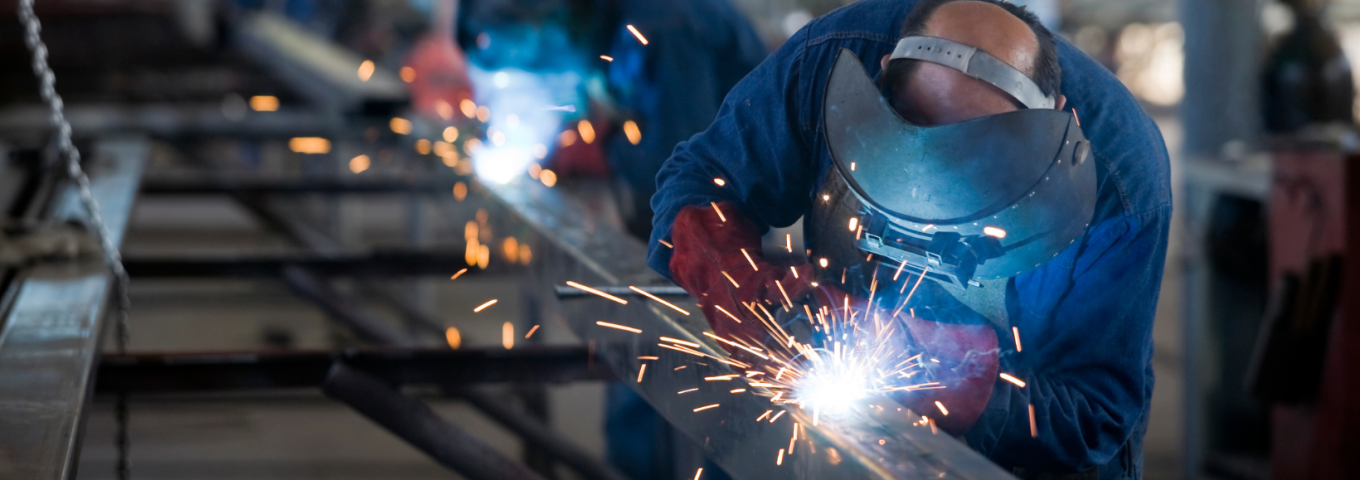Selecting the Right Extraction Arm for Your Welding and Fabrication Shop
Welding and fabrication processes release fine metal fumes and gases that can quickly affect air quality in your workshop. These fumes are not only unpleasant to work in, but they can also cause serious health issues if not controlled.
Installing an effective extraction arm is one of the most reliable ways to capture contaminants at source and maintain compliance with the Control of Substances Hazardous to Health (COSHH) Regulations. But with so many models and configurations available, how do you know which extraction arm is right for your workshop?
Why extraction arms matter
Welding fumes are classed as a human carcinogen by the Health and Safety Executive (HSE), meaning that every employer has a legal duty to control exposure. Local Exhaust Ventilation (LEV) systems with extraction arms provide targeted capture of fumes as they are generated, preventing them from spreading through the workshop and being inhaled by workers.
Unlike general ventilation, which dilutes contaminants, extraction arms remove pollutants directly from the air at the source. This makes them an efficient and compliant control measure.
How an extraction arm works
An extraction arm is a flexible duct fitted with a capture hood at one end and connected to a fan or filtration system at the other.
When positioned close to the welding point, the arm draws fumes into the hood and through the ducting, either filtering the air or venting it safely outdoors.
A typical arm includes:
- A hood or nozzle designed to capture fume or dust at its source
- Flexible joints that allow the operator to reposition the arm easily
- Ducting and a fan to create the required airflow
- Mounting on a wall, bench, or mobile unit for mobility and reach
Key factors to consider when choosing an extraction arm
1. Type of process
Different welding and fabrication methods produce varying amounts of fume, dust, or particulate. MIG and TIG welding create lighter airborne fumes, while plasma cutting or grinding can produce heavier dusts that require higher airflow rates.
Choose an extraction arm that’s suited to the materials and processes in your workshop.
2. Airflow and capture velocity
A good extraction arm provides enough airflow to capture contaminants without disturbing the workpiece. The HSE recommends a capture velocity appropriate to the fume type and process. Oversized arms waste energy; undersized ones fail to protect staff effectively.
3. Reach and flexibility
Arms come in a range of lengths and diameters, typically from 1.5 to 4 metres. Consider how much coverage your operators need and whether the arm should be fixed, wall-mounted, or mobile.
If workstations move regularly, a mobile extraction unit may offer greater versatility.
4. Material and durability
Extraction arms are exposed to heat, sparks, and metal dust. For welding, choose arms with heat-resistant hoods and smooth internal ducting to prevent dust build-up.
If the arm will be used for light dusts or solvents, a different material or filter system may be more appropriate.
5. Noise and comfort
Extraction systems can generate significant noise. Look for systems designed for quiet operation and ensure that airflow controls are within easy reach for the operator.
Fixed vs mobile extraction arms
Fixed arms are permanently mounted and ideal for production lines or workstations that stay in one place. They offer stable performance and can connect directly to a central LEV system.
Mobile arms, on the other hand, are attached to portable extraction units with built-in filters. They are suited to smaller workshops or for use on-site where permanent ducting isn’t practical.
Choosing between the two depends on your space, workflow, and frequency of use.
Maintenance and inspection
Like any LEV equipment, extraction arms must be maintained and tested regularly to ensure continued performance. Dust accumulation, damaged joints, or weakened airflow can all reduce efficiency.
The HSE requires a Thorough Examination and Test (TExT) of all LEV systems at least every 14 months. Between formal tests, operators should carry out simple checks to confirm airflow and hood positioning.
Regular cleaning of ducts, filters, and joints prevents mechanical failure and maintains consistent fume capture.
Why work with a specialist
A correctly specified extraction arm can make a significant difference to workplace safety and comfort. Working with a BOHS-qualified LEV engineer ensures your system meets COSHH requirements, achieves the right airflow, and integrates properly with any existing ducting or filtration systems.
LEV Engineering Ltd design and install bespoke extraction systems for workshops of all sizes, offering practical solutions for welding, grinding, and general fabrication environments.
Contact Us Today
If you’re unsure which extraction arm best suits your process, our engineers can help. Contact us today to discuss your workshop setup and get expert advice on the most efficient, compliant solution for your team.

